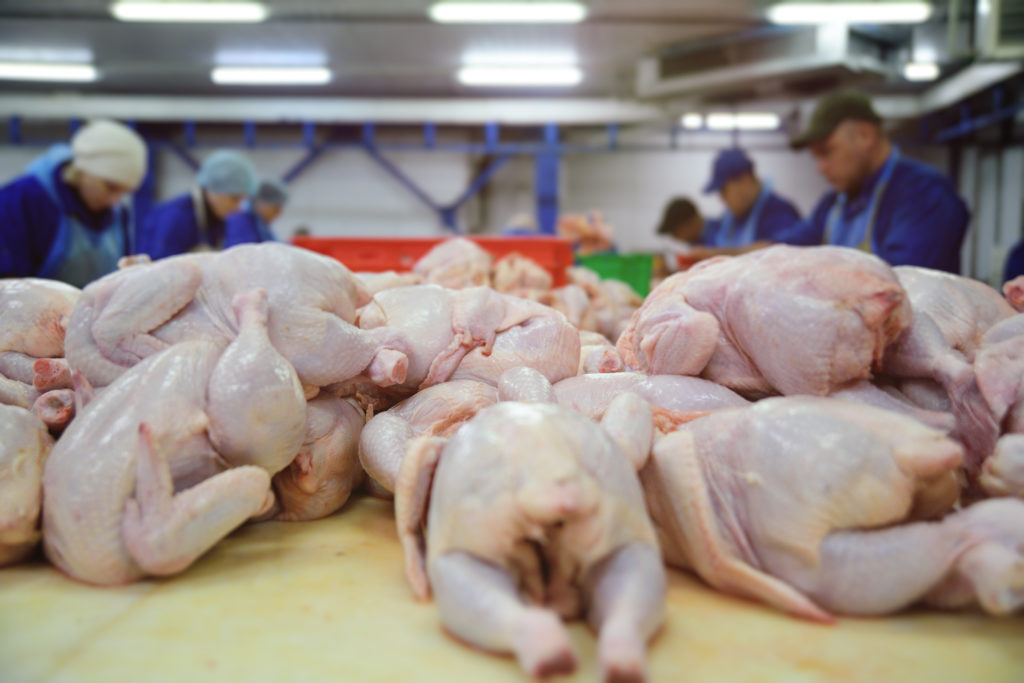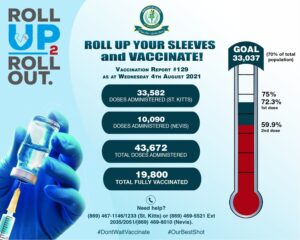Published 23 November 2018
Buckie Got It, St. Kitts and Nevis News Source
Outbreak of Multidrug-Resistant Salmonella Infections Linked to Raw Chicken Products

Posted October 17, 2018 at 12:00 PM ET
CDC and public health and regulatory officials in several states are investigating a multistate outbreak of multidrug-resistant Salmonella infections linked to raw chicken products. The U.S. Department of Agriculture’s Food Safety and Inspection Service (USDA-FSIS) is monitoring the outbreak.
Latest Outbreak Information

At A Glance
- Reported Cases: 92
- States: 29
- Hospitalizations: 21
- Deaths: 0
- Ninety-two people infected with the outbreak strain of Salmonella Infantis have been reported from 29 states.
- Twenty-one people have been hospitalized, and no deaths have been reported.
- Epidemiologic and laboratory evidence indicates that many types of raw chicken products from a variety of sources are contaminated with Salmonella Infantis and are making people sick.
- In interviews, ill people report eating different types and brands of chicken products purchased from many different locations.
- The outbreak strain has been identified in samples taken from raw chicken pet food, raw chicken products, and live chickens.
- Antibiotic resistance testing conducted by CDC on Salmonella bacteria isolated from ill people shows that the outbreak strain is resistant to multiple antibiotics. Read the Advice to Clinicians.
- A single, common supplier of raw chicken products or of live chickens has not been identified.
- The outbreak strain of Salmonella Infantis is present in live chickens and in many types of raw chicken products, indicating it might be widespread in the chicken industry. CDC and USDA-FSIS have shared this information with representatives from the chicken industry and asked about steps that they may be taking to reduce Salmonella contamination.
Advice to Consumers and Retailers

Always handle raw chicken carefully and cook it thoroughly to prevent food poisoning. This outbreak is a reminder that raw chicken can have germs that spread around food preparation areas and make you sick.
CDC is not advising that consumers avoid eating properly cooked chicken, or that retailers stop selling raw chicken products.
CDC advises consumers to follow these steps to help prevent Salmonella infection from raw chicken:
- Wash your hands. Salmonella infections can spread from one person to another if hands have Salmonella germs on them. Wash hands before and after preparing or eating food, after contact with animals, and after using the restroom or changing diapers.
- Cook raw chicken thoroughly to kill harmful germs. Chicken breasts, whole chickens, and ground poultry, including chicken burgers and chicken sausage, should always be cooked to an internal temperature of 165°F to kill harmful germs. Leftovers should be reheated to 165°F. Use a food thermometer to check, and place it in the thickest part of the food.
- Don’t spread germs from raw chicken around food preparation areas. Washing raw poultry before cooking is not recommended. Germs in raw chicken can spread to other foods and kitchen surfaces. Thoroughly wash hands, counters, cutting boards, and utensils with warm, soapy water after they touch raw chicken. Use a separate cutting board for raw chicken and other raw meats if possible.
- CDC does not recommend feeding raw diets to pets. Germs like Salmonella in raw pet food can make your pets sick. Your family also can get sick by handling the raw food or by taking care of your pet.
CDC will update the advice to consumers and retailers if more information comes available, such as a supplier or type of raw chicken product linked to illness.
Symptoms of Salmonella Infection

- Most people infected with Salmonella develop diarrhea, fever, and stomach cramps 12 to 72 hours after being exposed to the bacteria.
- The illness usually lasts 4 to 7 days, and most people recover without treatment.
- In some people, the diarrhea may be so severe that the patient needs to be hospitalized. Salmonella infection may spread from the intestines to the bloodstream and then to other places in the body.
- In rare cases, Salmonella infection can cause death unless the person is treated promptly with antibiotics.
- Children younger than 5 years of age, adults older than 65 years of age, and people with weakened immune systems are more likely to have severe illness.
- For more information, see the CDC Salmonella website.
Investigation Details
October 17, 2018
CDC and public health and regulatory officials in several states are investigating a multistate outbreak of Salmonella Infantis infections linked to raw chicken products. The U.S. Department of Agriculture’s Food Safety Inspection Service (USDA-FSIS) is monitoring the outbreak.
Public health investigators are using the PulseNet system to identify illnesses that may be part of this outbreak. PulseNet is the national subtyping network of public health and food regulatory agency laboratories coordinated by CDC. DNA fingerprinting is performed on Salmonella bacteria isolated from ill people by using techniques called pulsed-field gel electrophoresis (PFGE) and whole genome sequencing (WGS). CDC PulseNet manages a national database of these DNA fingerprints to identify possible outbreaks. WGS gives a more detailed DNA fingerprint than PFGE. WGS performed on Salmonella from ill people in this outbreak showed that they are closely related genetically. This means that the ill people are more likely to share a common source of infection.
As of October 15, 2018, 92 people infected with the outbreak strain of Salmonella Infantis have been reported from 29 states. A list of the states and the number of cases in each can be found on the Map of Reported Cases page.
Illnesses started from January 19, 2018, to September 9, 2018. Ill people range in age from less than 1 year to 105, with a median age of 36. Sixty-nine percent of ill people are female. Of 62 people with information available, 21 (34%) have been hospitalized. No deaths have been reported.
Investigation of the Outbreak
In interviews, ill people answered questions about the foods they ate and other exposures in the week before they became ill. Of 54 people interviewed, 48 (89%) people interviewed reported preparing or eating chicken products that were purchased raw, including ground chicken, chicken pieces, and whole chicken. Ill people reported buying many different brands of raw chicken products from multiple stores. Also, one person got sick after pets in their home ate raw ground chicken pet food. Another ill person lived with someone who works in a facility that raises or processes chickens.
The outbreak strain of Salmonella Infantis has been identified in samples from raw chicken pet food, from raw chicken products from 58 slaughter and/or processing establishments, and from live chickens. Samples collected at slaughter and processing establishments were collected as part of FSIS’s routine testing under the Salmonella performance standards. Furthermore, WGS showed that the Salmonella from these samples is closely related genetically to the Salmonella from ill people. This result provides more evidence that people in this outbreak got sick from handling or eating raw or undercooked chicken.
WGS analysis of isolates from 43 ill people and 68 food or environmental samples predicted resistance to some or all of the following antibiotics: ampicillin, ceftriaxone, chloramphenicol, ciprofloxacin, fosfomycin, gentamicin, hygromycin, kanamycin, nalidixic acid, streptomycin, sulfamethoxazole, tetracycline, and trimethoprim-sulfamethoxazole. Two non-clinical isolates had no predicted resistance. Testing of five isolates using standard antibiotic susceptibility testing by CDC’s National Antimicrobial Resistance Monitoring System (NARMS) laboratory confirmed these results (fosfomycin, hygromycin, and kanamycin were not tested by this method). These antibiotic-resistant infections may be difficult to treat with commonly recommended antibiotics, and may require a different antibiotic choice. Advice to clinicians is available.
Available data indicate that this strain of Salmonella Infantis may be present in live chickens and in raw chicken products. A single, common supplier of raw chicken products or of live chickens has not been identified.
CDC and USDA-FSIS shared the results of the investigation with representatives from the chicken industry to make them aware of the outbreak, and to ask them about steps they can take to reduce Salmonella contamination. Because investigation results suggest this strain of Salmonella Infantis is present in both live chickens and in raw chicken products, further investigation and interventions to reduce the prevalence of this strain should target both the live chicken industry and chicken processing facilities. Consumers should be aware that raw chicken may be contaminated with germs. Always follow food safety steps to prevent Salmonella infection from these products.






